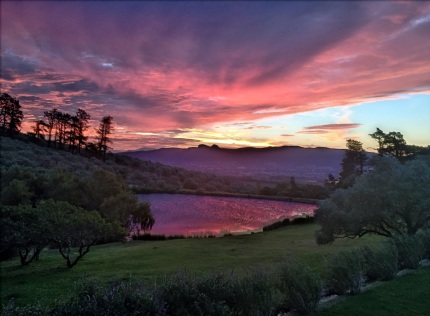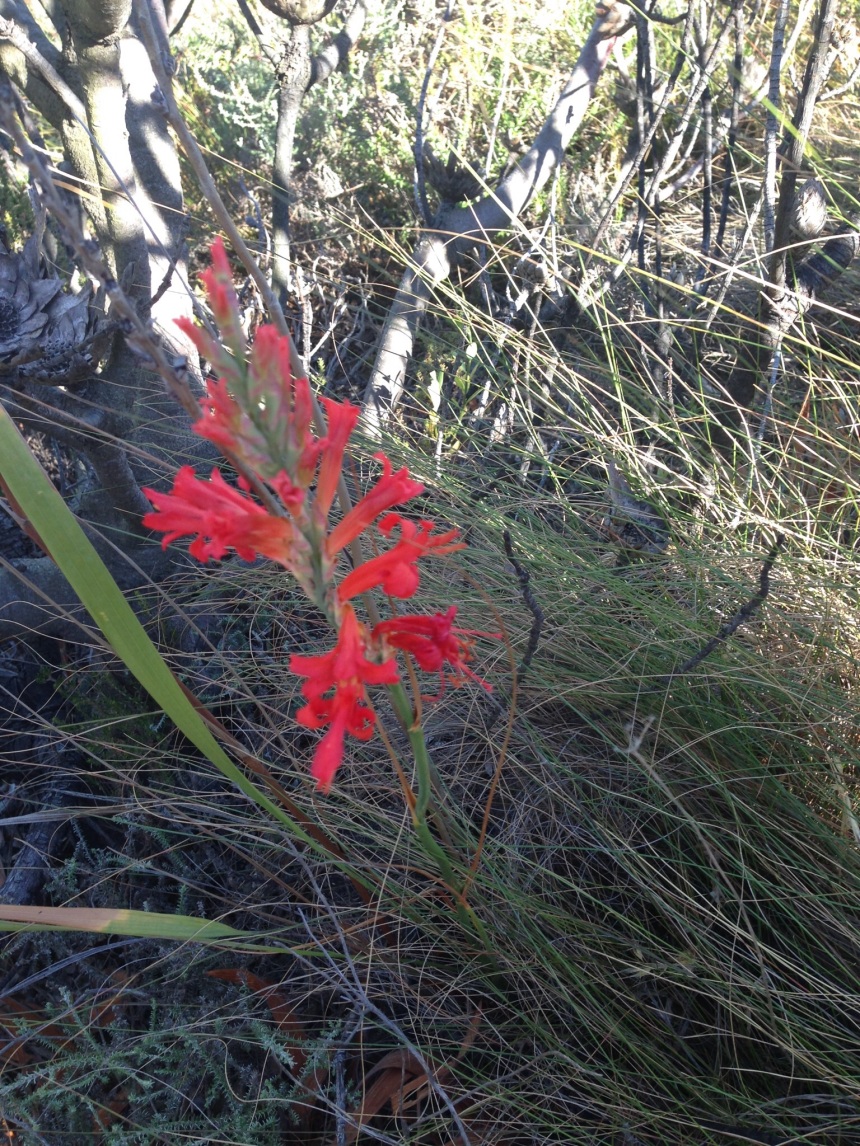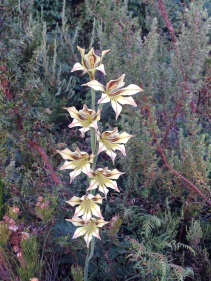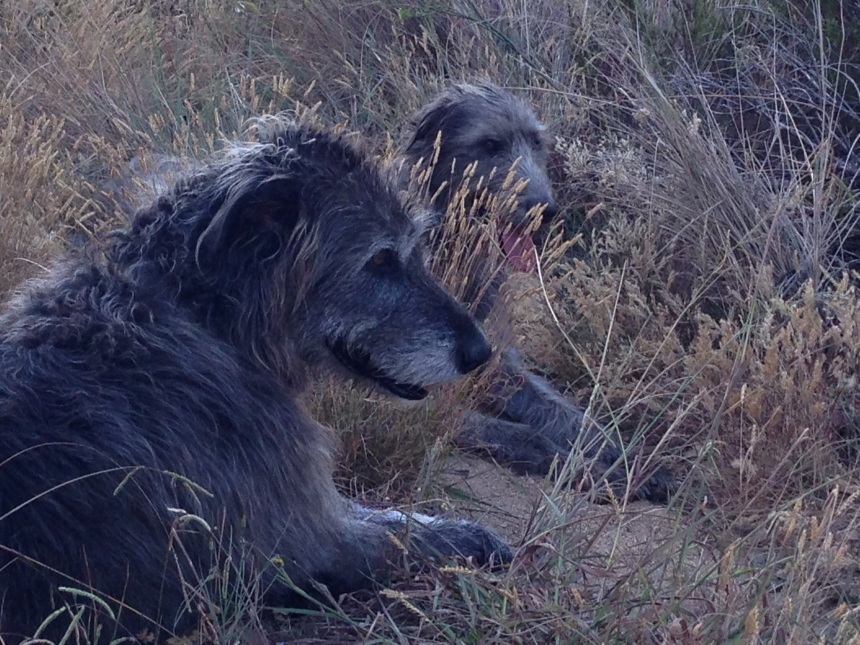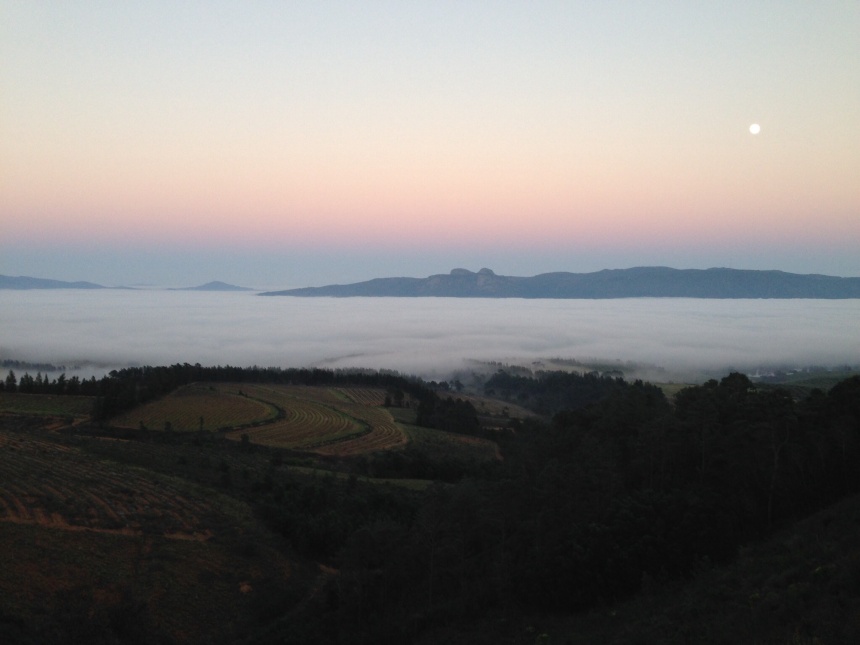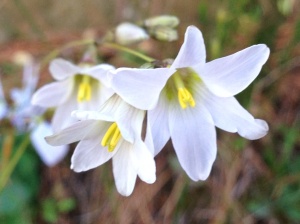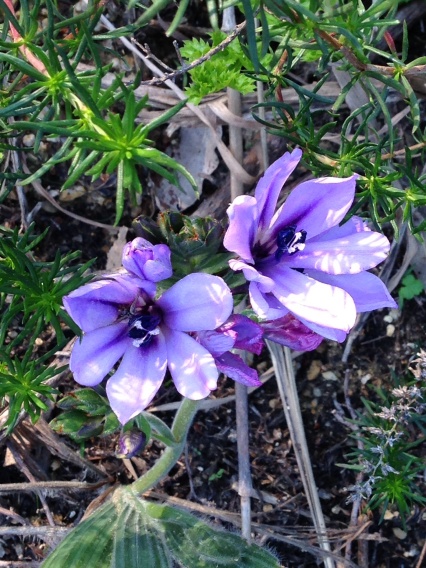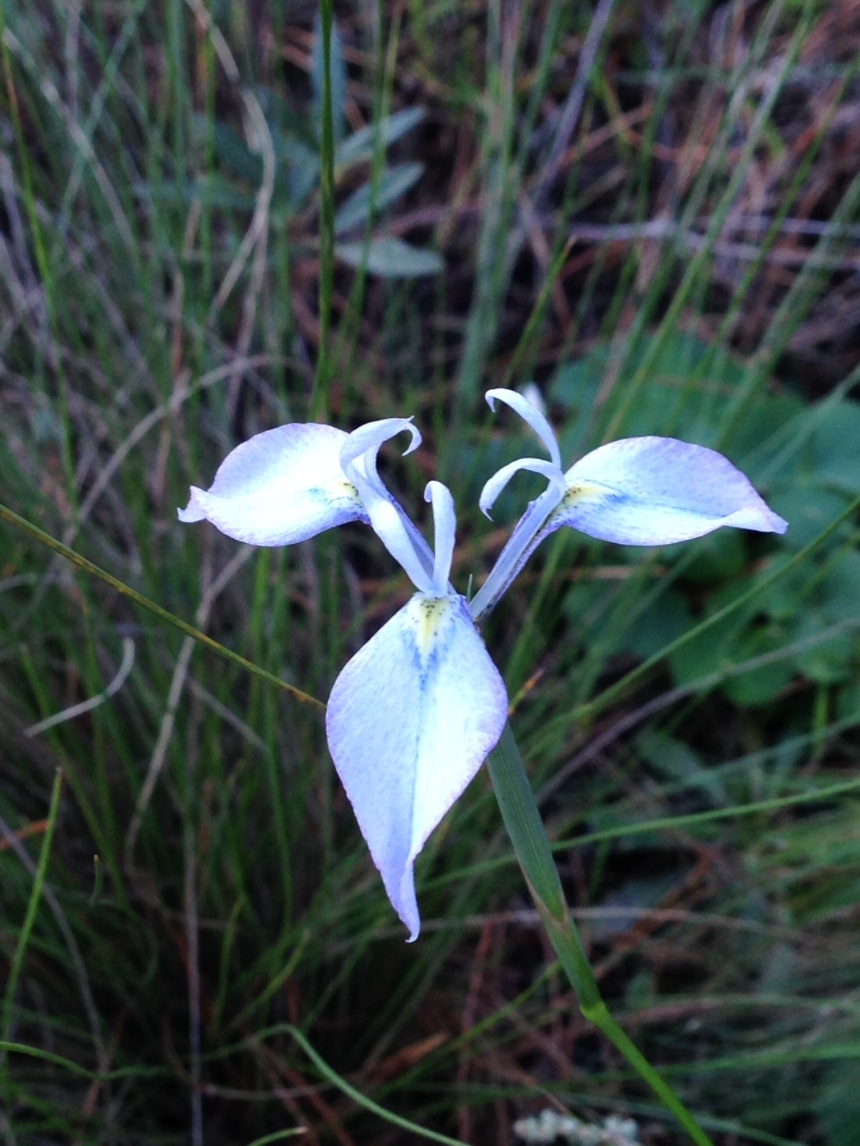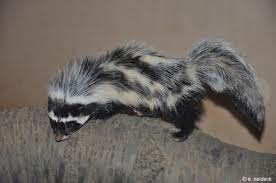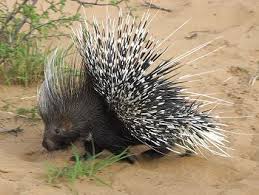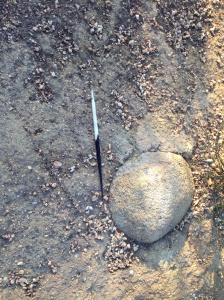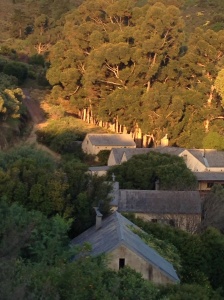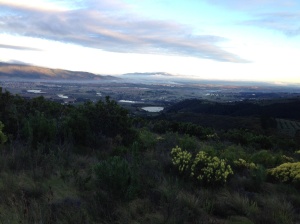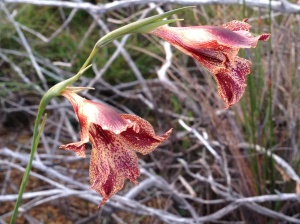The Day After the Hottest Day
Yesterday, March 2nd 2015, was the hottest day in Cape Town for 100 years. Fires raged on the Cape Penninsula and we could do nothing but think of our poor friends all over the Cape evacuating their homes, of the animals that had to be evacuated and of the wildlife on the mountains that must be suffering terribly. In many areas all that is left is a bare lunar landscape. This blog is dedicated to all our friends who have been battling the fires for the last three days.
All the more terrifying because we live on a mountain that is overdue a big fire, and beside a huge pine forest. As we worried about our friends yesterday a small fire broke out on our mountain, but was quickly contained by our local fire services.
The strange weather has contributed; on Sunday this wild windy sunset light the sky, and was followed by unbelievable howling winds that stripped the young olives off our trees. The wind howled all day on Monday and then dropped in the evening, to be followed yesterday by a day of searing heat all over the province. We quite often get temperatures of over 40 degrees down in the valley, but almost never here on the mountain. It was 42 all over the Cape yesterday, even here on the farm at 5 pm as we wound down from a long hot day.
As quickly as the heat appeared it was gone. This morning was remarkably cool and I went for a long run with the dogs. The sky was cloudy and drops of rain spat from the sky. This weather is most bizzare. There are not many flowers on the mountain, but some signs of life to come all the same. A pink tipped Protea Repens and a Pelargonium that can flower all the year round but still amazing that this plant should choose this hottest driest month to show it’s enchanting face.
The air was still and cool but the remains of the great heat still came as a powerful beat from the earth; there is no proper rain in the forecast and we can only pray that the Gods are kind to us and that fire does not come to claim us this year.

